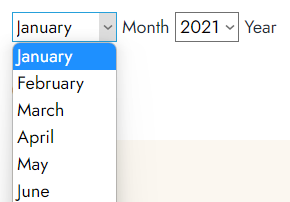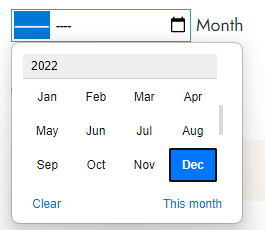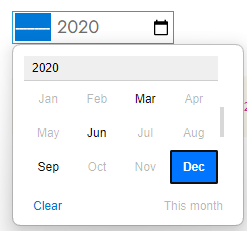Option 1: separate Month and Year dropdowns

Separate month and year dropdowns
It may be verbose, but you have total control over their placements, label, and format
<select>
<option>January</option>
<option>February</option>
<option>March</option>
<option>April</option>
<option>May</option>
<option>June</option>
<option>July</option>
<option>August</option>
<option>September</option>
<option>October</option>
<option>November</option>
<option>December</option>
</select> Month
<select>
<option>2021</option>
<option>2022</option>
<option>2023</option>
</select> Year
Option 2: use the browser’s built-in month picker

Built-in month picker
You have less control over the picker’s appearance, but the code is much cleaner. And localization support is free.
<input type='month'> Month
You are able to make some customization. For example, to restrict users to select month-ends of 2020 quarters only

2020 quarters only
<input type='month' min='2020-03' max='2020-12' step='3'>
According to MDN:
The control’s UI varies in general from browser to browser; at the moment support is patchy, with only Chrome/Opera and Edge on desktop — and most modern mobile browser versions — having usable implementations. In browsers that don’t support month inputs, the control degrades gracefully to a simple
<input type=”text”>, although there may be automatic validation of the entered text to ensure it’s formatted as expected.
As of December 2022, Firefox and Safari (Desktop) are yet to support this feature, while Chrome-based browsers (including the new Edge from Microsoft) and most mobile browsers (including Safari on iOS) do.

https://caniuse.com/mdn-html_elements_input_type_month (screenshot)